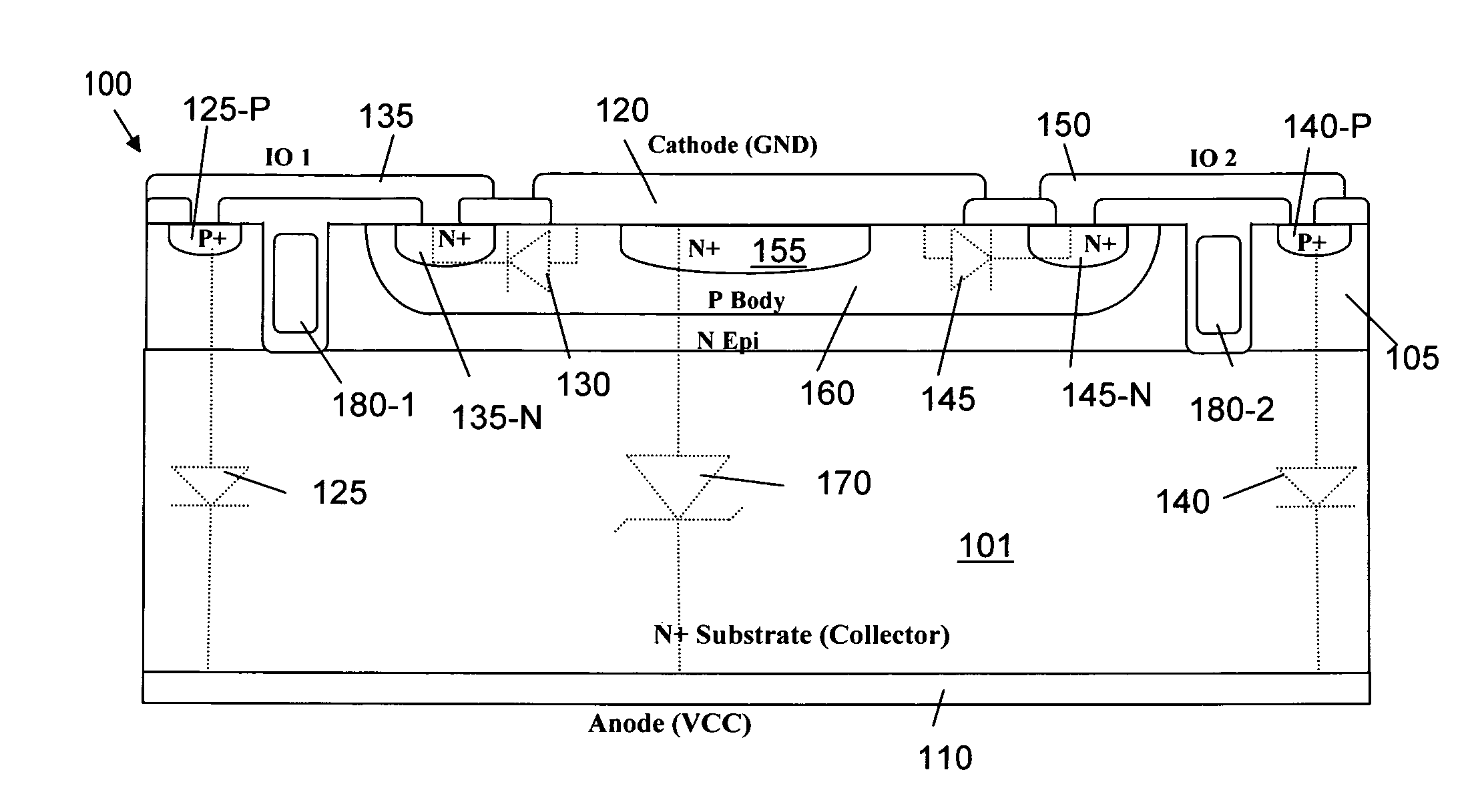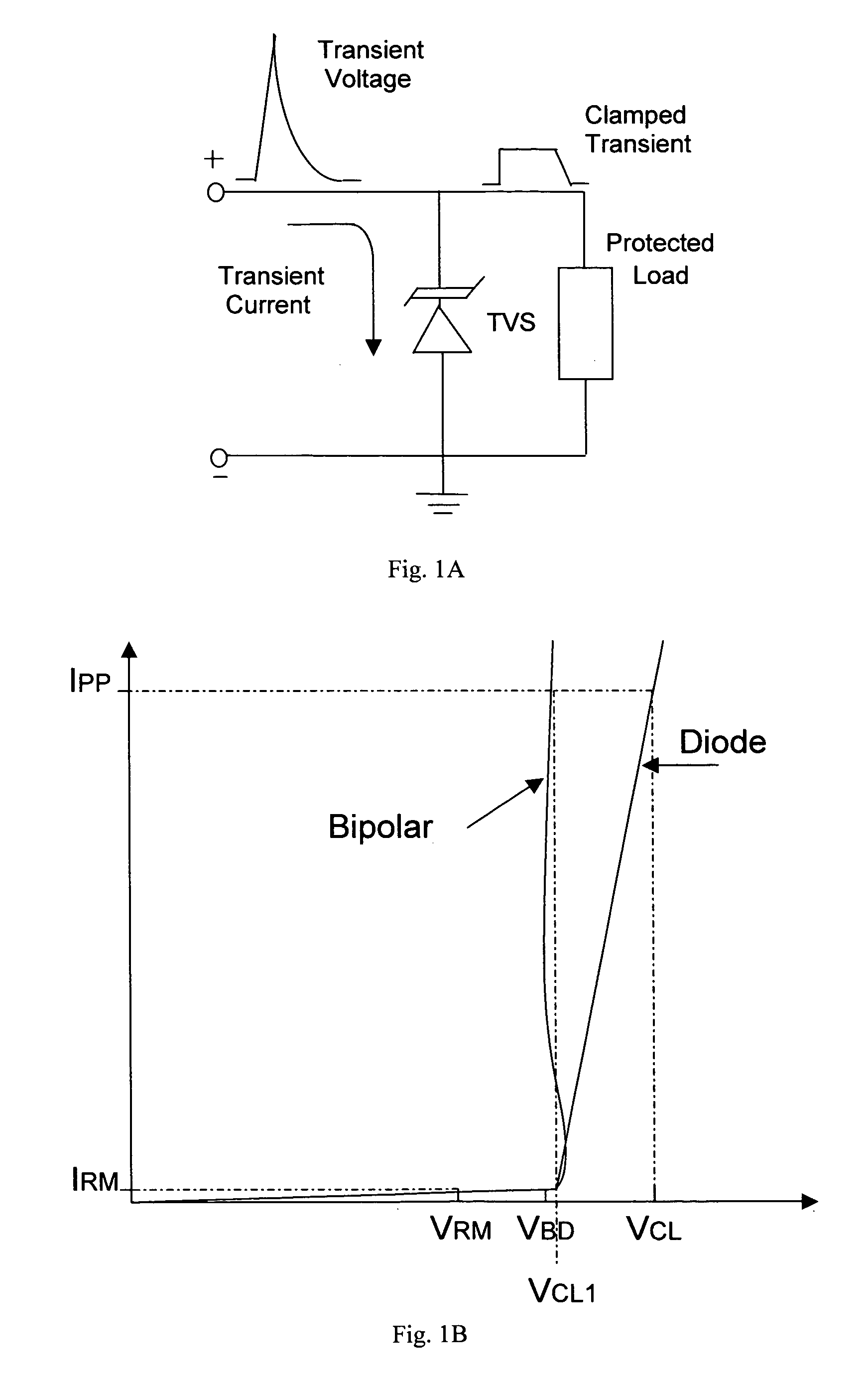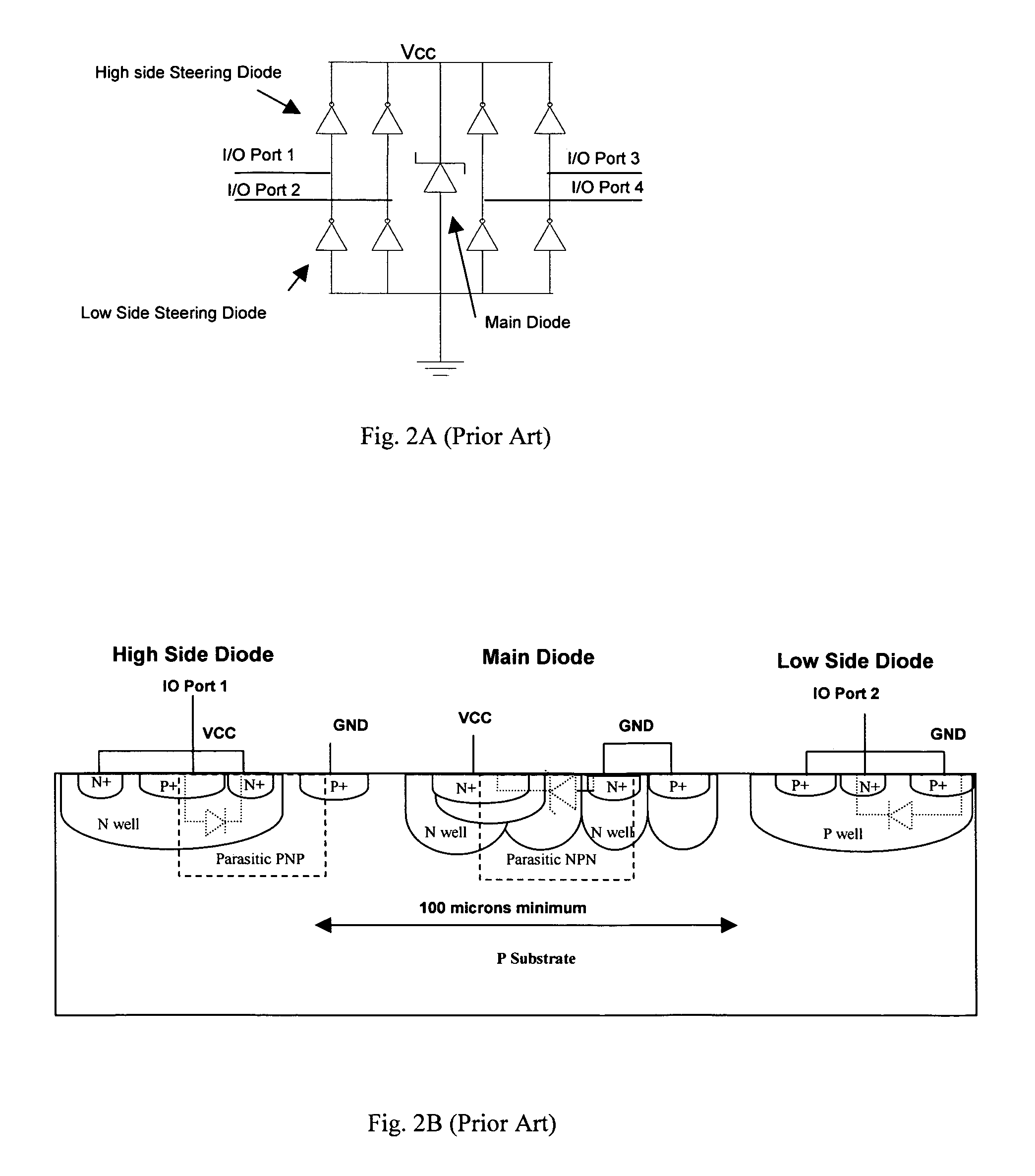Latch-up free vertical TVS diode array structure using trench isolation
a diode array and trench isolation technology, applied in the field of circuit configuration and method of manufacturing a transient voltage suppressor, can solve the problems of sudden and strong voltage snapback, parasitic pnp and npn transistors, undesirable effects of system instability or even damage, etc., to prevent the latch-up of parasitic pnp
- Summary
- Abstract
- Description
- Claims
- Application Information
AI Technical Summary
Benefits of technology
Problems solved by technology
Method used
Image
Examples
Embodiment Construction
[0025]Referring to FIG. 4 for a side cross sectional view of a new and improved implementation a part of TVS array of this invention. The partial TVS array 100 as shown with two channels is supported on a N-epi layer 105 on top of a N+ substrate 101 with the bottom surface connected to an anode terminal 110 at a Vcc voltage. The TVS array is connected between the anode 110 disposed at the bottom surface and a cathode terminal 120 disposed at a top surface connected to a ground voltage. The TVS array 100 further includes a first high side diode 125 and a first low side diode 130 connected to a first IO terminal 135. The TVS array 100 further includes a second low side diode 140 and a second low side diode 145 connected to a second I0 terminal 150. The first high side diode 125 is formed as a PN junction between the P+ doped region 125-P and the N-epi 105. The first low side diode 130 is formed as a PN junction between an N+ region 135-N and a P-body region 160 disposed below the cath...
PUM
 Login to View More
Login to View More Abstract
Description
Claims
Application Information
 Login to View More
Login to View More - R&D
- Intellectual Property
- Life Sciences
- Materials
- Tech Scout
- Unparalleled Data Quality
- Higher Quality Content
- 60% Fewer Hallucinations
Browse by: Latest US Patents, China's latest patents, Technical Efficacy Thesaurus, Application Domain, Technology Topic, Popular Technical Reports.
© 2025 PatSnap. All rights reserved.Legal|Privacy policy|Modern Slavery Act Transparency Statement|Sitemap|About US| Contact US: help@patsnap.com



